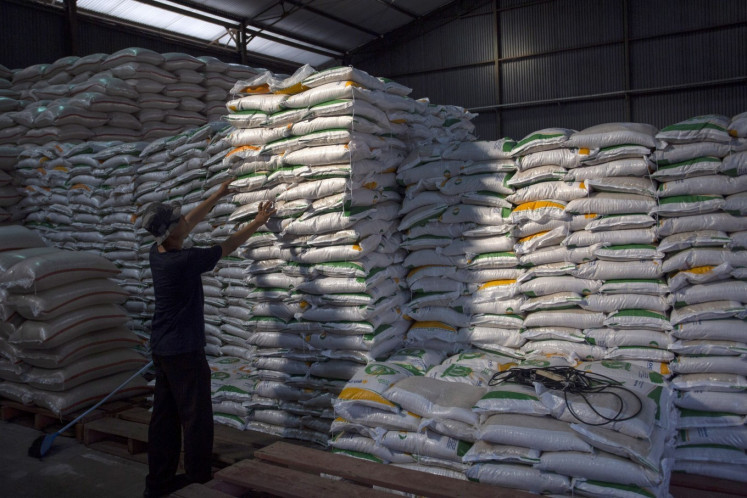Popular Reads
Top Results
Can't find what you're looking for?
View all search resultsPopular Reads
Top Results
Can't find what you're looking for?
View all search resultsHIV/AIDS most prevalent among drug users
Injecting drug users are at greatest risk of contracting HIV/AIDS, with about half of those surveyed infected with the virus, a Health Ministry study has found
Change text size
Gift Premium Articles
to Anyone
I
njecting drug users are at greatest risk of contracting HIV/AIDS, with about half of those surveyed infected with the virus, a Health Ministry study has found.
The study found that, across the eight provinces surveyed, the lowest prevalence of HIV/AIDS infections among injecting drug users (IDUs) in a province was 42.8 percent, with the highest proportion at 56 percent.
Second most vulnerable are members of the transgender and transvestite community with between 14 and 34 percent found to be HIV positive, followed by female sex workers (6.1-15.9 percent), homosexuals (2-8.1 percent) and men who frequently visit female sex workers (0.2-1.8 percent).
The study was conducted by the Health Ministry in 2007 in major cities in North Sumatra, Riau Islands, Jakarta, West Java, Central Java, East Java, Bali and Papua. There were about 400 respondents from each province.
"Most of the injecting drug users are young and male, and began taking drugs before they turned 18. Men account for about 96 percent of the IDU population," Tjandra Yoga Aditama, acting director general for disease control and environment restoration, said during a seminar held here Monday to release the study's findings.
The number of IDUs in Indonesia was estimated in 2006 to be between 190,000 and 248,000. Those who have been injecting drugs for more than two years are at higher risk of HIV infection than those who have used drugs for two years or less.
The IDU population is at high risk of infection because of needle sharing. According to the survey, 28 percent of IDUs are married and 47 percent have multiple sexual partners, meaning the IDU population could spread the virus to low-risk groups.
According to Tjandra, the proportion of people living with HIV/AIDS nationwide is estimated at around 0.16 percent of the total population, or about 368,000 people.
This demonstrates a significant increase from last year's estimate of 270,000 people and 193,000 in 2006.
Tjandra said the increase in HIV/AIDS infections was evident across all five high-risk populations surveyed, whose numbers had continuously increased over the past few years.
"We need to promote the use of sterile needles and condoms among the high-risk population. The HIV test service must be increased. Tests must be carried out not only on those at high risk, but also on their partners," he said.
Other high-risk groups also have the potential to spread HIV infections among low-risk groups.
The survey found that around 20 percent of the gay population are married, while 39 percent are bisexual. The risk becomes more evident among high-risk men, of whom between 55 and 87 percent are married but have sex with multiple partners, including with female sex workers.










